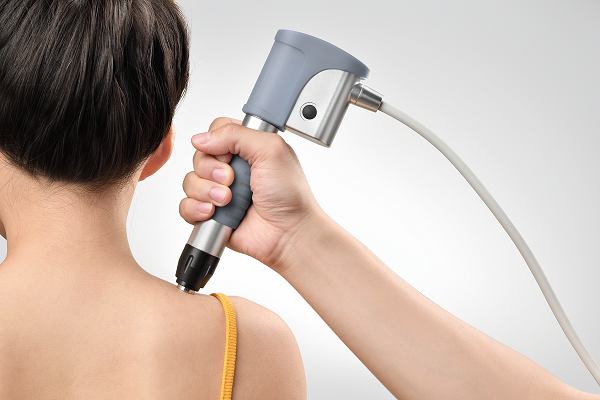
Shockwave Therapy
Shockwave therapy is an advanced, non-invasive treatment modality that has gained popularity in physiotherapy for managing a variety of musculoskeletal conditions. This therapy uses acoustic waves to deliver targeted mechanical energy into injured tissues, promoting healing and providing relief from pain.
Fees included in Physiotherapy visits.
BookCancelled or Missed Appointments Paid in Full by Client (24-hour notice required).
Please review our consent form.
The key advantages of shockwave therapy in physiotherapy:
- Effective for Chronic Conditions
Shockwave therapy is particularly beneficial for patients suffering from chronic musculoskeletal conditions that have been resistant to other treatments. Common issues like plantar fasciitis, tennis elbow, calcific shoulder tendinitis, Achilles tendinopathy, and patellar tendinopathy are often treated effectively with shockwave therapy. By addressing the root causes of these conditions, such as calcification or chronic inflammation, the therapy helps reduce pain and enhance mobility.
- Non-invasive and Low-risk
One of the greatest benefits of shockwave therapy is that it is non-invasive. Unlike surgery, there are no incisions, and the associated risks are minimal. Patients experience less downtime, making it an attractive option for those looking to avoid the recovery period linked to surgical interventions. Side effects are generally limited to mild discomfort or bruising, which are temporary and typically resolve within a few days.
- Accelerated Healing and Tissue Regeneration
Shockwave therapy stimulates a natural biological response within the body. It enhances blood flow to the affected area, encourages the release of growth factors, and promotes the formation of new blood vessels. These mechanisms accelerate the healing process, making it especially useful in conditions where healing has stagnated. By encouraging tissue repair and regeneration, it supports long-term recovery.
- Pain Reduction
The therapy helps modulate pain by stimulating nerve fibers and reducing the sensitivity of pain receptors in the affected area. Over time, as inflammation decreases and tissue regeneration occurs, the pain subsides. Many patients report significant relief after just a few sessions, allowing them to return to their daily activities and rehabilitation exercises more comfortably.
- Improved Mobility and Function
As shockwave therapy reduces inflammation and enhances tissue repair, it contributes to improved mobility and function in the affected joints or muscles. This is crucial for individuals with limited range of motion due to chronic tendinopathies or calcifications, enabling them to regain strength and flexibility more quickly than with conservative treatments alone.
- Minimal Treatment Time
A typical shockwave therapy session lasts between 10 and 20 minutes, making it a convenient option for patients. Most conditions respond to treatment within 3 to 6 sessions, depending on the severity and chronicity of the issue. This shorter treatment time is appealing to both patients and practitioners, as it allows for a more efficient and targeted approach to rehabilitation.
- Combination with Other Therapies
Shockwave therapy works well in conjunction with other physiotherapy modalities, including manual therapy, stretching, and strengthening exercises. By combining shockwave therapy with a holistic treatment plan, physiotherapists can address multiple aspects of a patient’s condition, promoting faster and more complete recovery.
